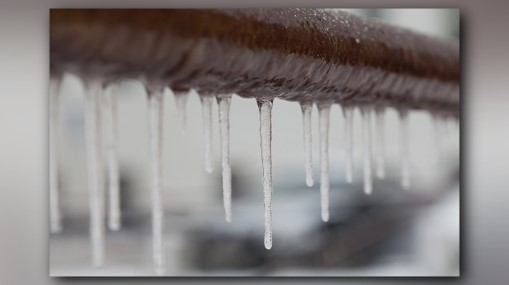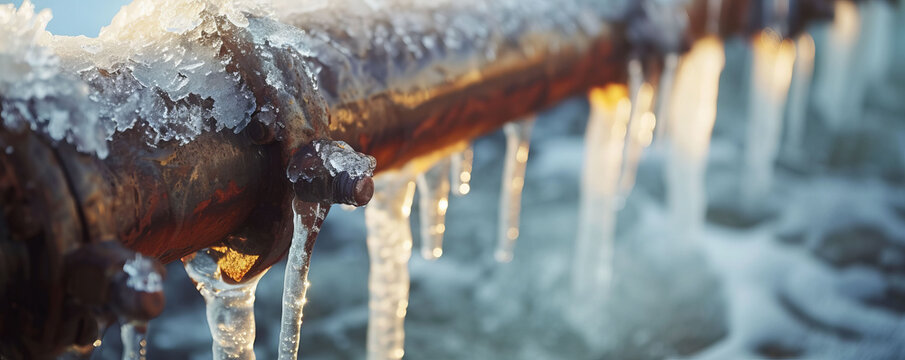We've noticed this post involving How To Avoid Freezing Pipes below on the internet and reckoned it made good sense to talk about it with you over here.

Cold weather can ruin your plumbing, especially by freezing pipelines. Right here's how to avoid it from occurring and what to do if it does.
Intro
As temperatures decline, the threat of frozen pipelines boosts, potentially leading to pricey repairs and water damages. Understanding exactly how to avoid frozen pipes is vital for home owners in chilly climates.
Avoidance Tips
Insulating at risk pipelines
Wrap pipes in insulation sleeves or use heat tape to protect them from freezing temperatures. Focus on pipes in unheated or exterior areas of the home.
Heating methods
Maintain indoor areas properly heated up, especially locations with pipes. Open cupboard doors to allow warm air to flow around pipelines under sinks.
Exactly how to identify icy pipelines
Seek decreased water flow from faucets, unusual odors or noises from pipelines, and noticeable frost on exposed pipelines.
Long-Term Solutions
Architectural changes
Consider rerouting pipelines far from outside walls or unheated locations. Add additional insulation to attics, basements, and crawl spaces.
Updating insulation
Purchase top quality insulation for pipelines, attic rooms, and walls. Correct insulation assists keep constant temperatures and reduces the danger of icy pipes.
Protecting Outside Plumbing
Yard hoses and outside taps
Disconnect and drain pipes garden tubes before winter season. Set up frost-proof faucets or cover outside taps with protected caps.
Understanding Frozen Pipes
What creates pipelines to freeze?
Pipelines ice up when exposed to temperatures listed below 32 ° F (0 ° C) for extended periods. As water inside the pipelines freezes, it broadens, taxing the pipe wall surfaces and possibly creating them to break.
Risks and problems
Icy pipelines can bring about water system disruptions, residential property damage, and expensive repair work. Burst pipelines can flooding homes and trigger considerable architectural damage.
Indicators of Frozen Pipeline
Determining frozen pipelines early can avoid them from bursting.
What to Do If Your Pipelines Freeze
Immediate activities to take
If you presume icy pipes, maintain taps available to eliminate pressure as the ice melts. Make use of a hairdryer or towels soaked in hot water to thaw pipes gradually.
Verdict
Preventing frozen pipes needs aggressive measures and fast responses. By comprehending the reasons, indications, and safety nets, house owners can secure their pipes during cold weather.
6 Proven Ways to Prevent Frozen Pipes and Protect Your Home
Disconnect and Drain Garden Hoses
Before winter arrives, start by disconnecting your garden hoses and draining any remaining water. Close the shut-off valves that supply outdoor hose bibs and leave the outdoor faucet open to allow any residual water to drain. For extra protection, consider using faucet covers throughout the colder months. It’s also important to drain water from any sprinkler supply lines following the manufacturer’s directions.
Insulate Exposed Pipes
Insulating your pipes is an effective way to prevent freezing. Pipe insulation is readily available at home improvement stores and is relatively inexpensive. Pay close attention to pipes in unheated areas such as the attic, basement, crawl spaces, or garage. Apply foam insulation generously to create a buffer against the cold. You can also wrap your pipes in heat tape or thermostat-controlled heat cables for added warmth.
Seal Air Leaks
Inspect your home for any cracks or openings that could let in cold air. Seal any holes around the piping in interior or exterior walls, as well as the sill plates where your home rests on its foundation. Additionally, make sure to keep your garage door closed unless you’re entering or exiting. Leaving it open creates a significant air leak that can lead to frozen pipes.
Allow Warm Air Circulation
During cold snaps, it’s essential to allow warm air to circulate evenly throughout your home. Leave interior doors ajar to promote better airflow. Open kitchen and bathroom cabinets to help distribute heat consistently around the rooms. If you have small children or pets, be sure to remove any household chemicals or potentially harmful cleaners from open cabinets for safety.
Let Faucets Drip
A small trickle of water can make a big difference in preventing ice formation inside your pipes. When temperatures drop significantly, start a drip of water from all faucets served by exposed pipes. This continuous flow helps prevent the water from freezing. Additionally, running a few faucets slightly can relieve pressure inside the pipes, reducing the chances of a rupture if the water inside does freeze.
https://choateshvac.com/6-proven-ways-to-prevent-frozen-pipes-and-protect-your-home/

I found that blog posting on Winter Plumbing Precautions: Preventing Frozen Pipes while doing a search on the web. I beg you take the opportunity to promote this blog posting if you liked it. Many thanks for taking the time to read it.
Details